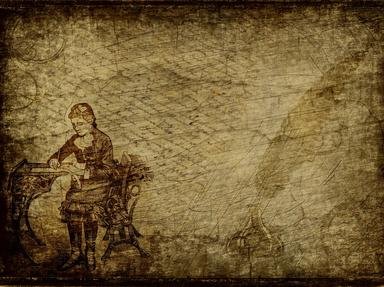Quiz Answer Key and Fun Facts
1. The story of "The Devil and Tom Walker" begins a few miles outside of what major New England metropolitan city known for tea and a massacre?
2. Which notorious captain, accused of being a pirate, did Irving claim had buried vast amounts of treasure in the area where the story begins?
3. The story begins around 1727. What natural phenomena (more commonly associated with California than Massachusetts) does Irving claim in the story were prevalent in New England at that time?
4. At the end of the story Tom Walker angrily exclaims "The devil take me if I have made a _______!" What British coin, which roughly means fourth part as it was a quarter of a penny, fills in this blank?
5. Which of these describes Tom Walker when the story begins?
6. Did Tom Walker have a wife when the story began?
7. Under which pen name did Washington Irving write "The Devil and Tom Walker", and under which pen name was it first published?
8. What was Tom Walker too squeamish to be involved in?
9. Tom Walker was never injured by his wife.
10. What name does Tom Walker say the devil is commonly known by?
11. Where does Tom Walker first meet the devil?
12. How does Tom Walker die?
13. Despite being cruel to his fellow man, Tom Walker was always kind to animals.
14. What does Tom Walker find buried in a skull at the old Indian fort?
15. Which of these fits the way Irving described the devil's appearance?
16. Who does the devil say he amuses himself by presiding at the persecution of?
17. Which of these did Tom Walker's wife NOT do when he told her of his meeting with the devil?
18. What happened to Tom Walker's wife?
19. What happened as Tom Walker grew old?
20. What were Tom Walker's weapons to keep the devil from getting his soul?
Source: Author
F6FHellcat
This quiz was reviewed by FunTrivia editor
looney_tunes before going online.
Any errors found in FunTrivia content are routinely corrected through our feedback system.

